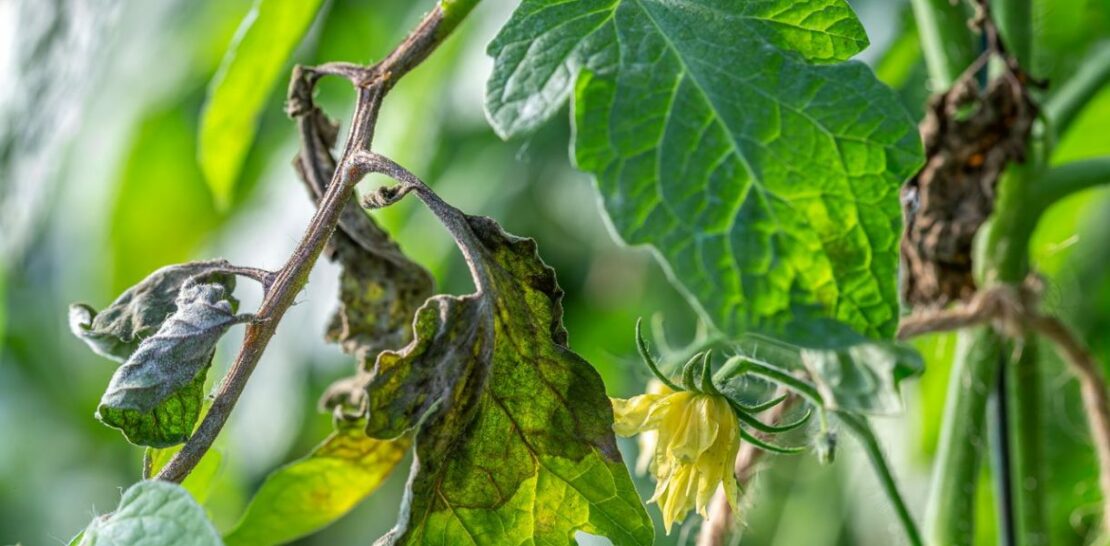Tomato plants are a favorite among gardeners and home-growers, prized for their delicious fruit and versatile culinary applications.
However, these plants are also susceptible to a variety of diseases and pests, with mildew being one of the most common and troublesome.
In this comprehensive guide, we will explore various strategies and techniques for protecting your tomato plants from mildew and strengthening leaf protection, ensuring a healthier and more productive garden.
Through proper planning, preventative measures, and diligent maintenance, you can enjoy a bountiful harvest of luscious tomatoes free from the detrimental effects of mildew.
Understanding Mildew: Causes, Symptoms, and Impact on Tomato Plants
Before diving into the methods of protection, it is essential to familiarize yourself with the root cause of the problem: mildew. By understanding the factors that contribute to mildew proliferation and the symptoms it presents in tomato plants, you can be better equipped to combat this fungal foe.
Powdery mildew and downy mildew are two common types that affect tomato plants. Both are caused by fungal pathogens that thrive in damp, humid conditions. Powdery mildew appears as a white, powdery substance on leaves, while downy mildew manifests as yellow spots on the leaf surface with a grayish-white, downy growth on the underside. If left untreated, mildew can spread rapidly, causing leaves to wither and die, ultimately reducing fruit yield and quality.
Various factors contribute to the development of mildew on tomato plants, including:
- High humidity and moisture levels – this creates an ideal environment for fungal growth.
- Poor air circulation – stagnant air can trap moisture and encourage spore proliferation.
- Overcrowding – when plants are too close together, they create a humid microclimate that is conducive to fungal growth.
- Insufficient sunlight – a lack of direct sunlight can prevent leaves from drying, resulting in a damp surface that is hospitable to mildew.
Planning and Plant Selection: The Foundation of Mildew-Resistant Gardens
Preventing mildew begins even before your tomato plants touch the soil. Strategic planning and careful plant selection can lay the groundwork for a mildew-resistant garden, setting your plants up for success.
- Choose resistant varieties: Some tomato cultivars have been bred specifically for their resistance to diseases, including mildew. Examples of such varieties include Iron Lady, Mountain Magic, and Defiant. By selecting these cultivars, you are already taking a proactive step in mitigating the risk of mildew.
- Optimal spacing: Giving your tomato plants plenty of room to breathe is crucial in preventing mildew. Proper spacing allows for better air circulation and reduces the chances of a humid microclimate forming. As a general rule, tomato plants should be spaced about 24-36 inches apart, depending on the variety. Consult seed packets or plant labels for specific spacing recommendations.
- Plant in full sun: Tomato plants require a minimum of 6-8 hours of direct sunlight per day. Not only does this promote healthy growth and fruit production, but it also helps to keep leaves dry and less susceptible to mildew.
Preventative Measures: Fending Off Mildew Before It Strikes
Once your tomato plants are in the ground, it’s time to employ preventative measures to keep mildew at bay. By being proactive, you can stop mildew from taking hold and causing irreversible damage to your tomato plants.
Maintain proper moisture levels: While tomatoes do require consistent watering, overwatering can lead to a damp environment that is conducive to mildew growth. It is crucial to water at the base of the plant, rather than overhead, to prevent wet leaves. Additionally, using a drip irrigation system or soaker hose can help maintain consistent moisture without creating excess dampness.
Prune regularly: Regular pruning of tomato plants not only promotes better growth and fruit production but also aids in the prevention of mildew. By removing lower leaves and branches, you can improve air circulation and decrease humidity levels around the plant. Moreover, pruning away any diseased or damaged leaves can help prevent the spread of mildew spores.
Apply preventative treatments:There are several organic and chemical treatments available that can help protect your tomato plants from mildew. Some popular organic options include neem oil, sulfur, and potassium bicarbonate, which can be applied as a foliar spray. Chemical fungicides, such as chlorothalonil and mancozeb, can also be effective in preventing mildew, but be sure to follow label instructions and safety precautions. Regular applications of these treatments can create a protective barrier on the plant’s leaves, preventing mildew spores from taking hold.
Monitoring and Maintenance: Vigilance in the Face of Mildew
Even with the best planning and preventative measures, mildew can still find its way onto your tomato plants. Regular monitoring and prompt action are key to mitigating the impact of this fungal menace.
Inspect plants regularly: Make a habit of regularly checking your tomato plants for any signs of mildew or other diseases. Early detection is crucial in preventing the spread of mildew and minimizing damage to your plants.
Address mildew promptly: If you discover mildew on your tomato plants, it is important to act quickly. Remove any affected leaves and dispose of them properly – do not compost diseased plant material, as this can spread the fungal spores. After removing the affected leaves, apply a treatment, such as neem oil or a fungicide, to help prevent further infection.
Maintain a clean garden: A tidy garden is a healthy garden. Regularly removing fallen leaves, branches, and other debris can help prevent the buildup of fungal spores in the soil. Additionally, rotating your crops each year can help to break the cycle of disease and maintain soil health.
In conclusion, protecting your tomato plants from mildew and strengthening leaf protection is a multifaceted process that requires careful planning, preventative measures, and diligent maintenance. By understanding the causes and symptoms of mildew, choosing resistant plant varieties and optimal planting conditions, employing preventative treatments, and monitoring your garden regularly, you can ensure a healthy, productive, and mildew-free tomato harvest. With persistence and attention to detail, you can enjoy the fruits of your labor and proudly serve up your homegrown tomatoes, knowing that you have successfully defended them from the threat of mildew.




